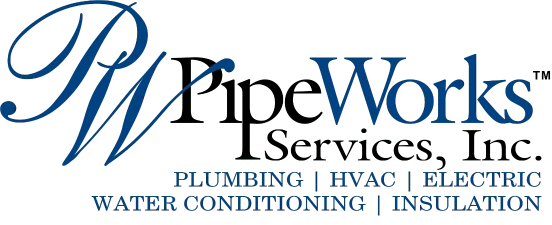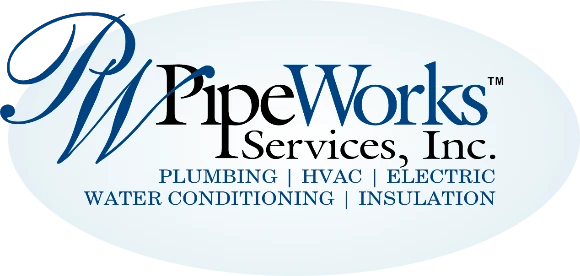If you’ve ever been shopping for a heating or cooling system, you’ve probably come across the term SEER. It’s a key number that can help you understand how efficient a system is, but what does it really mean? The SEER rating system for air conditioning units and heat pumps was begun in 1979 by the U.S. Department of Energy. The SEER rating became the standard method to measure the energy efficiency of these systems, replacing the earlier EER. The SEER rating for a product is critical, so you should understand what it indicates.
What Does SEER Mean?
SEER is actually an acronym that stands for Seasonal Energy Efficiency Ratio. It tells you how much cooling a system can provide compared to the energy it uses. You can think of SEER as the “miles per gallon” rating for your HVAC system. Just as cars with higher miles per gallon use less fuel, systems with higher SEER ratings use less energy. This is important to know because it will affect your energy bills.
How to Calculate SEER
The Department of Energy calculates the SEER ratio of an appliance by dividing the total cooling output of a system (its BTUs) by the total energy it uses (measured in watt-hours) over a typical cooling season. Systems with higher SEER ratings provide the same amount of cooling while using less electricity.
Typical SEER Ratings
In the United States, the minimum SEER rating for new air conditioners and heat pumps is set by law. As of 2023, the minimum SEER rating became 14 in most parts of the country and 15 in warmer regions like the Southeast and Southwest. However, some high-efficiency systems have SEER ratings of 20 or more.
Here’s a general breakdown of what SEER numbers mean:
- 14–15 SEER: Standard efficiency
- 16–20 SEER: High efficiency
- 21+ SEER: Ultra-high efficiency
SEER Ratings and Heating Efficiency
You already know that SEER is primarily a way to measure cooling efficiency. So, what does it have to do with heating? Some HVAC systems, like heat pumps, provide both heating and cooling. A heat pump with a higher SEER rating is also typically more efficient in heating mode. However, you’ll also want to look at the unit’s Heating Seasonal Performance Factor (HSPF) for a more accurate assessment of its heating efficiency.
SEER Ratings and Your Power Bills
The higher the SEER rating, the less energy your system will use. This can lead to big savings on your energy bills. That’s good news for homeowners. For example, upgrading from a 9 SEER system to a 14 SEER system can reduce your energy consumption by up to 35%, according to the Department of Energy.
Consider the following example. If your monthly cooling bill is $100 with a 9 SEER system, switching to a 14 SEER system could lower your bill to about $65. But your actual savings will depend on local energy rates, the size of your home, and how much you use your system.
Is a Higher SEER Always Best?
Choosing the right SEER rating depends on your specific needs and circumstances. While higher SEER ratings mean better efficiency, they’re not always the best choice for everyone. Systems with higher SEER ratings are more expensive up-front. It helps to look at the potential energy savings over the life of the system and compare it to the higher up-front cost. When you take this into consideration, you’ll have a better idea of what a good SEER rating is for you.
Because New Jersey experiences extreme temperatures, most homeowners here will benefit from high SEER systems. This is especially true if you are home a lot or have household members who need more consistent indoor temperatures. This includes people who work at home and homes with young children, older adults, or people with special health considerations. It also includes those who prefer more comfortable temperatures year-round.
If you only use your system occasionally, you might not save enough on energy bills to justify the cost of the system. Other factors in determining savings include the size of the system and how well you maintain the equipment.
Rebates and Incentives
You may be eligible for state rebates or incentives when you upgrade your system to a higher SEER rating. Some utility companies and governments offer rebates or tax credits for high-efficiency systems. For example, Jersey Central Power & Light (JCP&L) provides rebates for energy-efficient heating, ventilation, and air conditioning equipment. For central air conditioners, the rebates are $325 for systems with a SEER rating of 16 and an Energy Efficiency Ratio (EER) of 12.5.
Additional Government Help
Under the Inflation Reduction Act of 2022, U.S. homeowners can potentially claim a federal tax credit for upgrading to energy-efficient HVAC systems. You must ensure that the HVAC system you install meets the energy efficiency criteria set by the ENERGY STAR program under the Inflation Reduction Act. Central air conditioners must meet or exceed a SEER rating of 16. Heat pumps are a bit different. Whether your heat pump is eligible for the tax credit depends on your region. Check the ENERGY STAR website or consult your HVAC installer for information.
The Future of SEER Ratings
Energy efficiency standards are constantly improving. In 2023, the U.S. Department of Energy updated its minimum SEER requirements to reflect advances in technology. This means there’s a phase-out of older, less efficient systems, and homeowners now have more access to high-efficiency options.
What Is a Better Measure of Efficiency Than SEER?
Seasonal Energy Efficiency Ratio 2 (SEER2) is an updated metric used to measure the energy efficiency of air conditioners, heat pumps, and other HVAC systems. It replaces the original SEER rating as of January 2023, in line with updated U.S. Department of Energy regulations. The SEER2 rating incorporates new testing procedures that aim to provide a more accurate reflection of real-world conditions. SEER remains relevant, but in the near future, more products will begin to have a SEER2 rating.
SEER2 ratings are typically slightly lower than SEER ratings for the same system. This is because of the stricter testing conditions now in place. However, this does not mean the system is less efficient; it simply reflects the more rigorous measurement standard.
Your Local Resource
Understanding SEER ratings is an important step in choosing the right heating and cooling system for your home. A higher SEER rating means better efficiency, lower energy bills, and reduced environmental impact. Pipe Works Services is here to help you make the best decision for your situation. We furnish a selection of services in addition to our HVAC installation, repair, and maintenance. If you have plumbing or electrical needs, we have professionals on our team who can help. We can handle projects of all sizes, and we also do commercial work. For more information on how we can assist you, give us a call at Pipe Works Services in Chatham, NJ today.





